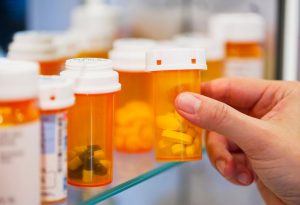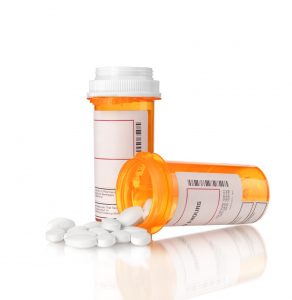As the United States continues to battle against the use of natural and synthetic narcotics as a national crisis, the government ensures that individuals who suffer from narcotic addiction are given sufficient amounts of healthcare and treatment by establishing Opioid Treatment Programs (OTPs) that are certified and accredited by a government agency.
Amid this epidemic, the country’s economic burden has already reached almost $78 billion a year and this includes the cost for healthcare and treatment as well as productivity loss and criminal concerns related to the substance.
What are OTPs
 OTPs are accredited clinics legally allowed to dispense substance antagonists such as Methadone and Buprenorphine, synthetic substances classified as controlled drugs, to manage the withdrawal symptoms of patients with OUD and reduce their craving for the substance. This is also known as the Medically-Assisted Treatment (MAT).
OTPs are accredited clinics legally allowed to dispense substance antagonists such as Methadone and Buprenorphine, synthetic substances classified as controlled drugs, to manage the withdrawal symptoms of patients with OUD and reduce their craving for the substance. This is also known as the Medically-Assisted Treatment (MAT).
MAT includes the prescription of medicines coupled with therapies and counseling to respond to the holistic needs of people diagnosed with OUD. Since the medications involved are controlled substances, the Substance Abuse and Mental Health Services Administration (SAMHSA) ensures safe and quality healthcare services among OTPs.
This is done through an accreditation and certification process that must be accomplished by OTPs. It is important to note that certification follows after accreditation from an independent SAMHSA-approved accreditation body. In OTP admissions, some states require OTPs to seek a clearance inquiry about the applicants from the Office of Behavioral Health Registry.
What Medicines are Provided by OTPs
 There are three medicines approved by the Federal Drug Agency (FDA) that can be administered to patients with OUD by a physician with a special license. Methadone and Buprenorphine are slow-acting substances whose impact does not give the user a sense of euphoria, although they do still have an addictive element.
There are three medicines approved by the Federal Drug Agency (FDA) that can be administered to patients with OUD by a physician with a special license. Methadone and Buprenorphine are slow-acting substances whose impact does not give the user a sense of euphoria, although they do still have an addictive element.
In addition, with the close supervision of the physician as well as taking the right amount of dosage, these medicines can be safe and highly effective. These controlled drugs work best during the first phase of treatment which is detoxification and must be consumed for at least one year to achieve full recovery.
The third approved medicine is a synthetic substance antagonist that does not belong to the family of drugs where the first two are included. This medicine is known as Naltrexone. Just like the first two medicines, Naltrexone binds with the body’s receptors and blocks the effect of addictive substances. However, this is not effective during detox treatment.
What are the Qualifications for Accreditation and Certification of OTPs
 SAMHSA is the governing body involved in the accreditation of OTPs. To be a certified OTP, one must first be successfully accredited and must adhere to the standards of the Federal treatment. There are also other conditions that SAMHSA requires OTPs to comply with. One of them is the capacity of this program to initiate an effective MAT to patients.
SAMHSA is the governing body involved in the accreditation of OTPs. To be a certified OTP, one must first be successfully accredited and must adhere to the standards of the Federal treatment. There are also other conditions that SAMHSA requires OTPs to comply with. One of them is the capacity of this program to initiate an effective MAT to patients.
Certification for narcotic treatment programs can be granted in as long as 3 years but of course, there are also exemptions. As soon as all the requirements have been met by the applicant, SAMHSA will now notify the Drug Enforcement Agency (DEA) that the OTP can now be operational and proceed to give quality treatment to patients with OUD.
With the advent of the COVID 19 Pandemic, certain guidelines have been modified in terms of accepting applicants for OTP. One concern is the telehealth services that could be possibly conducted only when physicians approve that healthcare conditions can be viewed through telemed consultations instead of physical exams.
For new applicants in the OTP, telehealth is unacceptable because there is a need for physical exams to be conducted upon admission. But then again, this is still subject to SAMHSA’s discretion. Buprenorphine medications can be considered and discard physical health exams but for Methadone treatment, it is completely not applicable.
What are the Federal Treatment Standards
Federal treatment standards ensure that narcotic treatment procedures are capable of giving safe and quality healthcare services to people who are struggling with OUD. The following standards must be upheld by OTPs in every state of the country:
Keeping an organizational structure and hiring qualified staff
OTPS must be equipped with people who are highly qualified to provide proper healthcare to patients. Physicians and medical staff must be licensed and well-trained. An administrative and organizational structure of all members must also be kept since this mainly guarantees a smooth system in the organization.
Continuously assessing quality healthcare, ensuring patient admission criteria and required services
OTPs must always be mindful of quality healthcare that is why an evaluation of all policies and procedures must be discussed yearly. Admission criteria for patients must always be strictly followed to ensure that their needs are appropriately attended to. And lastly, all required services – medical treatment, therapy, and counseling – must all be met.
Guaranteed safe treatment
This involves keeping track of all medications and progress in treatment among patients with accuracy and confidentiality. OTPs must ensure that all actions involved in the organization put the highest value to patient care.
Challenges Among Opioid Treatment Programs (OTPs)
Apart from the challenges that the pandemic is offering specifically in terms of limiting access to actual healthcare at present, OTPs continue to face the challenge of being not welcomed by certain communities as well as being restricted by varying policies in each state. These challenges limit the accessibility of this treatment plan to patients who would benefit from them.
Denial by certain communities
Some communities reject the idea of establishing OTPs within the area because of the stigma that businesses will be affected and that the safety of people will be compromised. It has even been noted that rural areas are more welcoming than urban ones.
Varying restrictions among states
Some state policies are too strict and ideal to the point that services do not reach a great number of people. For instance, the number of people counselors are limited to cater could be too small compared to what they could truly attend to.
Overall, these narcotic rehab programs are really valuable means to combat substance abuse. However, their accessibility remains limited due to a few factors that the federal government must continue to think about.
